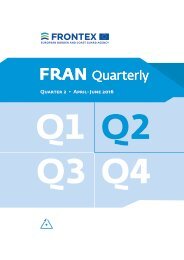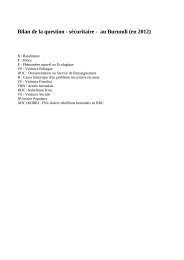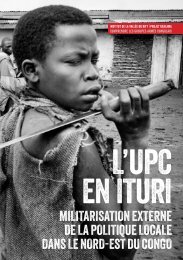Create successful ePaper yourself
Turn your PDF publications into a flip-book with our unique Google optimized e-Paper software.
LOCAL POPULAR SUPPORT FOR THE ISLAMIC STATE<br />
Social Media<br />
■ DAVEED GARTENSTEIN-ROSS<br />
PREPARED STATEMENT<br />
ANALYSTS HAVE INCREASINGLYsought to understand what social<br />
media can tell us about militant groups’ strengths and capabilities.<br />
The use of social media as a tool to gain a better understanding of<br />
violent nonstate actors (VNSAs) is still in its infancy, and methodologies<br />
and best practices are still being developed. While social media–based analysis<br />
has yielded at times great insight into the Islamic State, it has also led<br />
to some analytical pitfalls, as IS has determinedly exaggerated its successes<br />
and skillfully disguised many of its setbacks. This article focuses on using<br />
social media as a tool for assessing local support for IS.<br />
Social media cannot be the sole lens through which analysts seek to<br />
understand militant groups, and, indeed, analysts should be cautious<br />
of overreliance on it as an explanatory tool. The natural habitat of most<br />
VNSAs is in the shadows rather than the limelight. When IS began to<br />
loudly advertise its campaign to pry away al-Qaeda’s affiliates, many analysts<br />
interpreted the latter’s relatively muted response and dearth of social<br />
media support as signs that IS was highly likely to gobble up al-Qaeda’s<br />
network. This has not occurred, and, in fact, al-Qaeda has been highly<br />
effective at clamping down on nascent IS support within its ranks. Al-<br />
Qaeda and its allies have militarily punished groups that had the temerity<br />
to break away and join IS. 1 The early overestimation of IS’s likely ability to<br />
break up al-Qaeda’s network should serve as a cautionary tale, and it is one<br />
reason social media–based analysis should always be cross-checked against<br />
all other available sources of information, including local/regional press<br />
reporting, academic analyses, and on-the-ground sources.<br />
Since, as mentioned, the use of social media as an analytical tool for<br />
50






